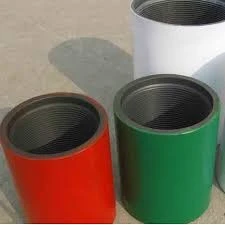- Afrikaans
- Albanian
- Amharic
- Arabic
- Armenian
- Azerbaijani
- Basque
- Belarusian
- Bengali
- Bosnian
- Bulgarian
- Catalan
- Cebuano
- Corsican
- Croatian
- Czech
- Danish
- Dutch
- English
- Esperanto
- Estonian
- Finnish
- French
- Frisian
- Galician
- Georgian
- German
- Greek
- Gujarati
- Haitian Creole
- hausa
- hawaiian
- Hebrew
- Hindi
- Miao
- Hungarian
- Icelandic
- igbo
- Indonesian
- irish
- Italian
- Japanese
- Javanese
- Kannada
- kazakh
- Khmer
- Rwandese
- Korean
- Kurdish
- Kyrgyz
- Lao
- Latin
- Latvian
- Lithuanian
- Luxembourgish
- Macedonian
- Malgashi
- Malay
- Malayalam
- Maltese
- Maori
- Marathi
- Mongolian
- Myanmar
- Nepali
- Norwegian
- Norwegian
- Occitan
- Pashto
- Persian
- Polish
- Portuguese
- Punjabi
- Romanian
- Russian
- Samoan
- Scottish Gaelic
- Serbian
- Sesotho
- Shona
- Sindhi
- Sinhala
- Slovak
- Slovenian
- Somali
- Spanish
- Sundanese
- Swahili
- Swedish
- Tagalog
- Tajik
- Tamil
- Tatar
- Telugu
- Thai
- Turkish
- Turkmen
- Ukrainian
- Urdu
- Uighur
- Uzbek
- Vietnamese
- Welsh
- Bantu
- Yiddish
- Yoruba
- Zulu
api casing sizes
Understanding API Casing Sizes A Comprehensive Guide
The American Petroleum Institute (API) has established a set of standards for the petroleum and natural gas industries to ensure safety, reliability, and compatibility in the use of casing and tubing in drilling operations. One of the cornerstones of these standards is the API casing sizes, which are crucial for engineers, geoscientists, and other professionals involved in oil and gas exploration and production.
What is API Casing?
API casing is a type of pipe used to line the borehole of a well, providing structural support and preventing the collapse of the well walls. Casing also serves to isolate different geological formations, preventing the contamination of freshwater zones and ensuring that fluids are contained within the designated area. The proper selection of casing sizes is essential for optimizing the efficiency and safety of drilling operations.
Importance of Casing Sizes
The choice of casing size directly influences several aspects of well construction and maintenance
1. Hydraulic Performance The diameter of the casing affects the flow rate of fluids in and out of the well. Proper sizing ensures that production rates are maximized while minimizing pressure losses.
2. Structural Integrity Larger casings may offer more strength but can also increase costs and logistical challenges. The correct casing size will balance these factors, ensuring the well can withstand the targeted pressures and environmental conditions without risk of collapse.
3. Cost Efficiency Using the right size casing can significantly reduce costs associated with materials, transportation, and installation. Over-sizing or under-sizing casings can lead to increased expenses and operational delays.
API Casing Size Standards
API casing sizes are specified in both inches (external diameter) and schedules (wall thickness). The standard sizes range from small diameters, like 4.5 inches, to larger sizes exceeding 20 inches. The casing classes are categorized as follows
1. Surface Casing Typically used to protect freshwater aquifers and support the upper part of the well. Common sizes range from 9.625 inches to 20 inches in diameter.
api casing sizes

2. Intermediate Casing Installed below the surface casing, this type of casing is designed to handle further geological challenges and maintain well integrity. Sizes can vary broadly based on geological conditions.
3. Production Casing This is installed to facilitate the extraction of hydrocarbons and is often the largest casing in a well. It must be robust enough to withstand the stresses of production activities.
4. Liner Casing A partial casing used to extend the length of an existing casing string, liner casing can be effective in deep wells where a full casing string may be impractical.
Factors Influencing Casing Size Selection
Selecting the appropriate casing size involves several considerations
- Well Depth Deeper wells generally require larger and heavier casings to withstand increased pressure.
- Formation Characteristics The geological conditions, including rock type and stability, play a significant role in determining the necessary casing size.
- Fluid Characteristics The type of fluids to be managed, including the presence of gas or corrosive materials, can influence casing design.
- Regulatory and Environmental Considerations Compliance with local regulations and environmental protection standards must be a priority when selecting casing sizes.
Conclusion
Understanding API casing sizes is vital for the success of oil and gas operations. By adhering to API standards and considering relevant factors, professionals can select the appropriate casing to ensure the integrity, safety, and efficiency of their wells. An investment in proper casing design and implementation not only mitigates risks but also maximizes productivity and cost-effectiveness over the life cycle of a well. As technology evolves and new challenges emerge within the industry, staying informed about casing standards and sizes will remain a critical component in the pursuit of resource extraction. Whether you are a seasoned engineer or a newcomer to the field, mastering the concepts surrounding API casing sizes is a necessary step towards achieving operational excellence in the oil and gas industry.
-
Tubing Pup Joints: Essential Components for Oil and Gas OperationsNewsJul.10,2025
-
Pup Joints: Essential Components for Reliable Drilling OperationsNewsJul.10,2025
-
Pipe Couplings: Connecting Your World EfficientlyNewsJul.10,2025
-
Mastering Oilfield Operations with Quality Tubing and CasingNewsJul.10,2025
-
High-Quality Casing Couplings for Every NeedNewsJul.10,2025
-
Boost Your Drilling Efficiency with Premium Crossover Tools & Seating NipplesNewsJul.10,2025







